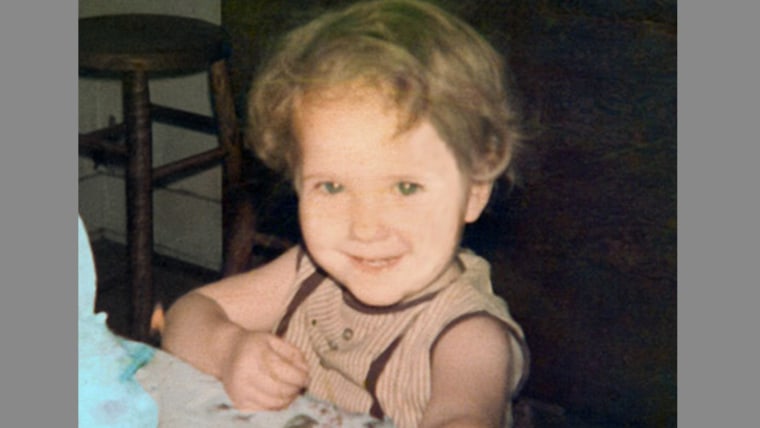Play Episode 4 of the second season of Dateline: Missing in America Podcast below and click here to follow.
Read the transcript here:
Her name was Elizabeth Ann.
I’ve known not a soul sweeter than.
Her name was Elizabeth Ann and to her family she was a child of beauty and grace.
Oh, where have you gone, little messenger of love?
Why have they taken you away?
Jeannie Gill Hinck wrote and recorded this song, called “Messenger of Love.”
It both honors and calls out to someone she loves dearly to this day, even though it’s been nearly 60 years since they last saw one another.
Jeannie Gill Hinck: "I wanted to -- to pass down the -- the heritage, or the -- the story of Beth."
Josh Mankiewicz: “You don’t want people to forget Beth.”
Jeannie Gill Hinck: “No, I don’t. And I don't want people to forget that it only takes an instant for your entire world to change.”
That song and those lyrics tell how her world changed, and of her sister: Elizabeth Ann Gill, whom they call “Beth.”
We had no premonition or clue
that the days with her were numbered so few.
Beth Gill disappeared when she was just 2 years old.
I’m Josh Mankiewicz and this is Missing in America, a podcast from Dateline.
This case began in the 1960s, and it’s a unique one.
It’s the story of a family’s tireless, dedicated search for that little girl, who would now be a 60-year-old woman.
Over the decades since Beth’s disappearance, police have chased leads, sought out suspects, conducted searches.
They’ve had sightings, a confession, and the most promising: At least a dozen women have come forward believing they are Beth.
Well, they aren’t.
But at the end of the day, that is what her family is hoping for after decades of searching: That Beth finds them.
So listen carefully.
Beth might very well be alive.
You might know her.
You might even be her...
Martha Gill Hamilton: “I won't stop looking for her. If she's out there, and I believe she is, we have to be where she can find us.”
To tell Beth’s story, we need to take you back almost six decades to Sunday, June 13, 1965.
We begin in the town of Cape Girardeau, Missouri, in a home on South Lorimer street, just a few blocks from the Mississippi River.
Martha Gill Hamilton: "We lived in a house that my dad had actually grown up in."
That’s Martha Gill Hamilton, another of Beth’s sisters.
Martha Gill Hamilton: “Many of the neighbors at that time had lived there for years and years. In fact, they were all considered somewhat like family. We all kind of looked out for each other.”
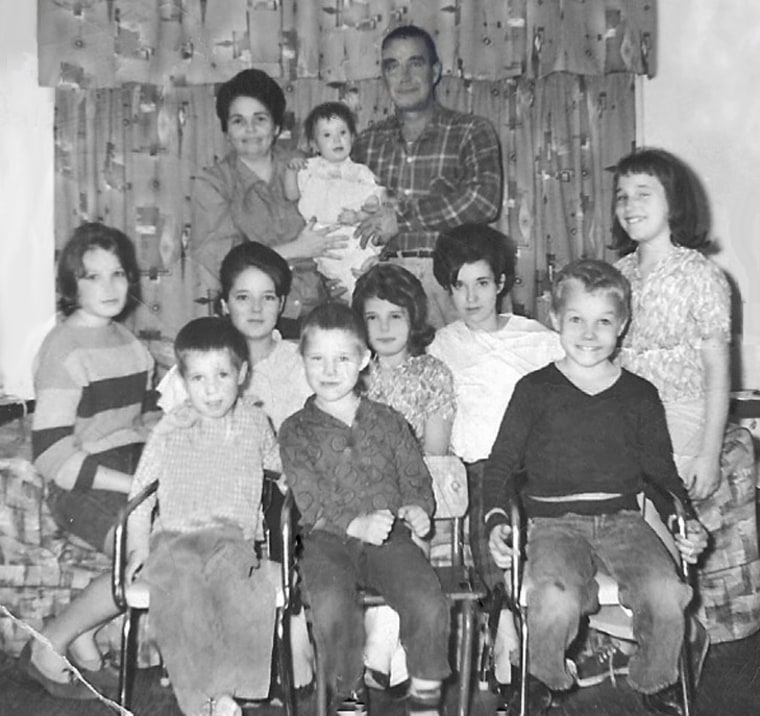
There were 10 children in the Gill family, ranging in age from 2 to 19.
Back then, Martha was 15, Jeannie was 13.
On that June afternoon, eight of the kids, including Beth, were at home enjoying the summer day.
Jeannie Gill Hinck: “It was a Sunday. It was a beautiful day. All of us kids were -- were playing outside.”
4:15 p.m. Time for church.
The older children were getting dressed and gathering the younger ones.
As they were all getting ready, Jeannie remembers catching a glimpse of Beth.
Jeannie Gill Hinck: “She was in the backyard when I saw her. Sometimes she would play with the cats or the animals in the yard.”
Then, 15 minutes later...
Jeannie Gill Hinck: “I called the kids in and we were looking for Beth. And that's when we realized that she was not with us.”
They started calling out for her, searching inside the house and the yard. Then everywhere.
No one could find Beth.
Jeannie Gill Hinck: “We went to the neighbors' homes to see if they had -- had seen her. We just started calling for her.”
Josh Mankiewicz: “And no response?”
Jeannie Gill Hinck: “No.”
And now suddenly, they were frightened.
The search turned frantic.
Beth’s brothers and sisters scoured the neighborhood with anyone they could get to help them, shouting her name and looking under every bush, behind every tree, and at every shadow on every street.
Jeannie Gill Hinck: "I finally accepted that she just wasn't anywhere she should have been. And so, I called my sister Laura, and Laura said, 'Call the police.'"
In that moment of Beth’s disappearance, her parents weren’t around.
Her dad, Harry, was in St. Louis where he worked as an electrician.
Her mom, Anola, 15-year-old Martha, and another sister were all traveling home from Illinois.
So just the older Gill children were watching the younger ones.
Martha says that as they approached their neighborhood, they spotted the chaos and the Cape Girardeau cops.
Martha Gill Hamilton: "We saw a lot of police activity and we were like, 'Oh, wow. Something's going on.' Mom jumped out of the car and ran to the steps, and my aunt said, 'Anola, we can't find Beth.'"
Josh Mankiewicz: "You'd never had a problem like this before -- of Beth not turning up, or wandering away, or anything like that?"
Martha Gill Hamilton: "Oh, no, not at all. My first thought was, ‘Well, she's around here. It hasn't been very long.’"
Josh Mankiewicz: “She’s off playing with somebody else and she’ll turn up.”
Martha Gill Hamilton: “Right.”
Josh Mankiewicz: “How long until you realized that was not happening?”
Martha Gill Hamilton: "It was probably the next day. And I think, strangely enough, my parents thought, 'Well, something strange has happened. But she'll be home.'"
It was wishful thinking. Beth did not come home.
And so what lingers, six decades later, is the girl they knew.
Martha Gill Hamilton: "We were all like a mother to her. She was tiny and her hair was either light brown or some people would call her blonde. And she had the most beautiful blue eyes."
Beth was the last child born into this big family.
Jeannie Gill Hinck: "Just a -- just a house full of kids. Kind of chaotic. My dad worked. My mother stayed home and took care of the kids."
1965 was a more innocent time, when little girls didn’t just disappear into thin air.

Lorimer Street wasn’t Easy Street, but it was their street. And it was safe. Or maybe it just felt that way for most of their childhood.
Jeannie Gill Hinck: "It was an entirely different mindset back then. The attitudes were different because society was different."
Josh Mankiewicz: “We didn’t often see people as potential predators.”
Jeannie Gill Hinck: "No.”
Josh Mankiewicz: “And, in fact, episodes like the one we’re talking about are one of the things that changed people’s attitudes.”
Jeannie Gill Hinck: "Yes.”
On that hot summer day police began knocking on every door in the Gills’ neighborhood.
Bobby Newton: “The whole department deployed.”
Bobby Newton is now the spokesman for the Cape Girardeau Police Department. When Beth Gill went missing, he wasn’t even born. He did research the case files for us, and says it was all hands on deck that day at the Gill home.
Bobby Newton: “I believe at one point there was approximately 300 volunteers and police officers that were helping search for her.”
Newton says one of the things police did was organize search parties along the Mississippi River.
Bobby Newton: “They were just a couple of blocks from the river. And one of the family members did say that Beth used to go down to the river and play with her siblings. So they did do an extensive search of the river.”
Josh Mankiewicz: “So they looked in the river and they didn’t find anything.”
Bobby Newton: “Yes.”
Newton says in the days after Beth’s disappearance, Cape Girardeau Police circulated a missing persons flier.
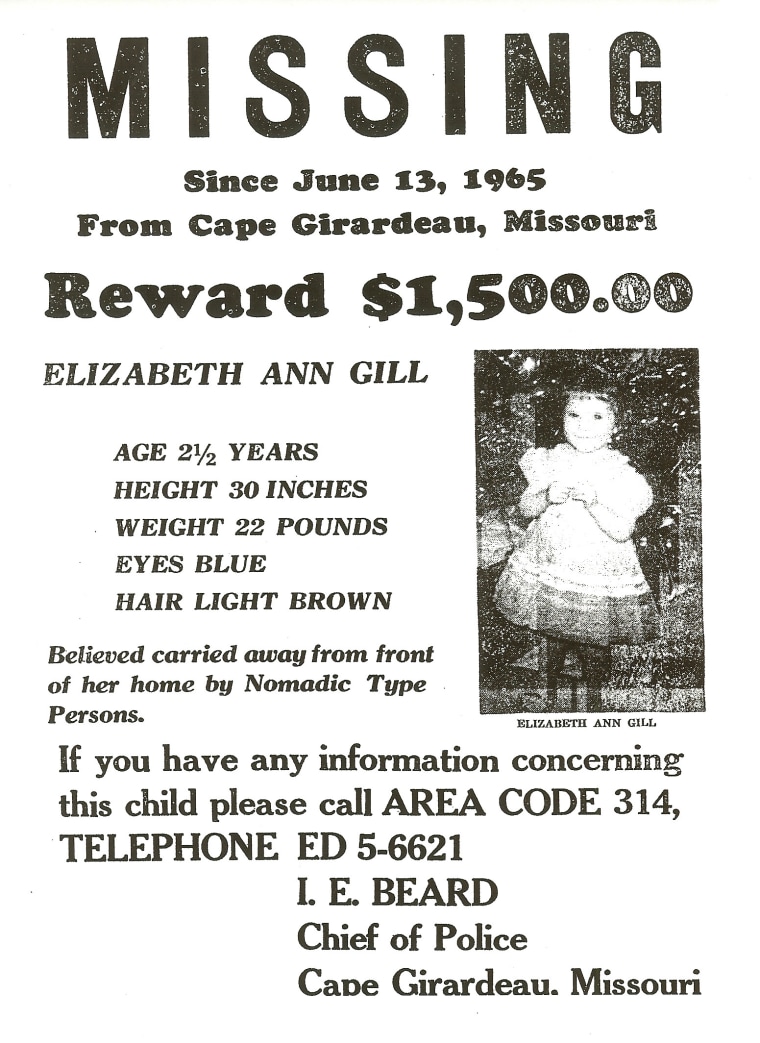
It showed a black and white photo of Beth, and gave descriptive details: She had a chicken pox scar on her right elbow and was last seen wearing a green and white checked blouse. The flier also offered a $1,500 reward, urging people to call the police chief with any leads.
Bobby Newton: "As a matter of fact, the officers that were assigned to that case were put on a 24-hour callback. So basically, if there's any leads that came up during that time period, they were mandated to come back in."
Josh Mankiewicz: “Missing children were handled differently back in 1965, weren’t they?”
Bobby Newton: "Unfortunately, there just wasn't the technology that we have today. You know, we've got drones, we've got ATVs now. We've got, you know, all sorts of access to things that can help locate these children faster."
Back then, all the searching police could do did not lead to Beth. And as the hours, the days, and then the months passed, it became clear she wasn’t coming home.
Josh Mankiewicz: “From that day, June 13th, 1965, you've never heard of, or from, your sister?”
Martha Gill Hamilton: “No, nothing.”
Josh Mankiewicz: “Do you think she’s still alive?”
Martha Gill Hamilton: “I do. I do.”
As investigators searched for any leads or witnesses, the family was wracking their brains for any sort of clue, until their mom remembered something that happened just a week before Beth disappeared.
Jeannie Gill Hinck: “We were carrying things to the car, and Beth had been outside sitting on the steps.”
Martha Gill Hamilton: “Mom walked out and saw Beth talking to this strange woman and called her back. She said she was a middle age or -- to older woman and a little bit heavyset. And that was about it.”
Their mom described the car the woman was sitting in: a 1965 Ford Thunderbird.
That was an unusual sight in their neighborhood.
Jeannie and Martha’s mom told police about the incident and through investigation officers learned this woman was traveling with three other people, all of which led police and the Gill family to a theory about Beth’s disappearance.
Jeannie Gill Hinck: “Our feelings have always been that she was taken by someone who wanted a baby.”
So, who was that woman in the Thunderbird?
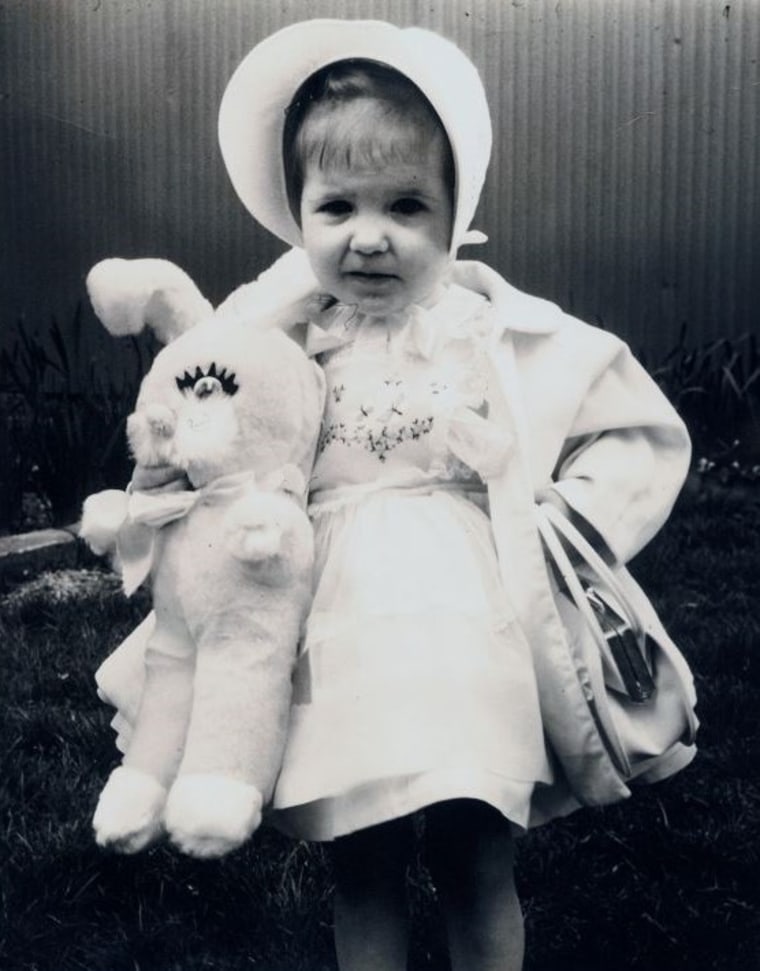
And while she wandered out to play,
someone stole Elizabeth away...
Cape Girardeau was a comfortable small town back in 1965, home to this big family, which included young Beth.
Josh Mankiewicz: "It sounds like it was a pretty safe place."
Jeannie Gill Hinck: "It was very safe. We were in a residential neighborhood. There were kids. We just went where we wanted to without thought of being harassed or hurt in any way."
Kids played in their yards -- and in everyone else’s, too -- never worrying about the dangers that might be lurking.
That was true at least until a new motel called the Downtowner set up shop around 1964. It landed essentially right in the Gills’ backyard. And then everything was, well, different.
Martha Gill Hamilton: "You were a little more cautious because what we called strangers were around a little more."
The motel housed guests who stayed for days and weeks at a time -- all within feet of the Gills’ home.
The Gills immediately thought the mysterious woman their mom saw in that Ford Thunderbird might be from that motel.
And it turned out their instincts were right.
Josh Mankiewicz: "The cops armed with that description found somebody who looked like that, with that kind of car, who was living at the motel behind your house."
Martha Gill Hamilton: "A husband and a wife, and then his older daughter and her husband."
Police interviewed a local car dealer who had encountered the two couples. The dealer said they were traveling in two separate vehicles: the Thunderbird and a Chevy truck. And he provided another helpful bit of information.
Martha Gill Hamilton: "They had gone into the car dealership and ordered a part for their truck. And the dealer told them, ‘Well, the part won't be in for another week.’ And they said, ‘No problem. We're going to be around for a couple of weeks.’ So they left the number for the motel to be reached through. And Monday, the part came in. He called the motel. And they said, ‘Oh, we're sorry. They checked out yesterday and left.’”
According to Cape Girardeau Police, the two couples checked out of the motel on the very day Beth went missing.
Martha Gill Hamilton: "That's what made the police suspicious that something was odd going on. A block or so away, there was a gas station. And they ask him, ‘Have you seen these people?’ He goes, 'Oh, yeah.' And he said, 'I thought they were kind of strange, so I wrote down the license plate number.’ And then a few days later, they went back to the station and he wrote down the license plate number again. And it was a different plate."
Josh Mankiewicz: "This is the Thunderbird. No question it's the same car, but now it's got a different plate."
Martha Gill Hamilton: "Yes."
The same Thunderbird Martha’s mother saw with the woman talking to Beth before she went missing.
The puzzle pieces were slowly revealing a picture: Same people. Same car. Same motel.
Martha Gill Hamilton: "But it ended up, they had three different license plates on the same vehicle."
Josh Mankiewicz: "What picture emerged of those people who owned that car and were staying in the motel? Who were they and what were they really doing in town?"
Martha Gill Hamilton: "Well, they were in town selling purses door-to-door. They are referred to generally as Travelers."
‘Travelers’ are a nomadic group who usually trace their ancestry to Ireland or Scotland. Selling purses was not illegal, but switching plates on their car made those ‘Travelers’ law enforcement’s best lead.
Armed with information about the two couples, police released an internal memo telling officers to be on the lookout for them.
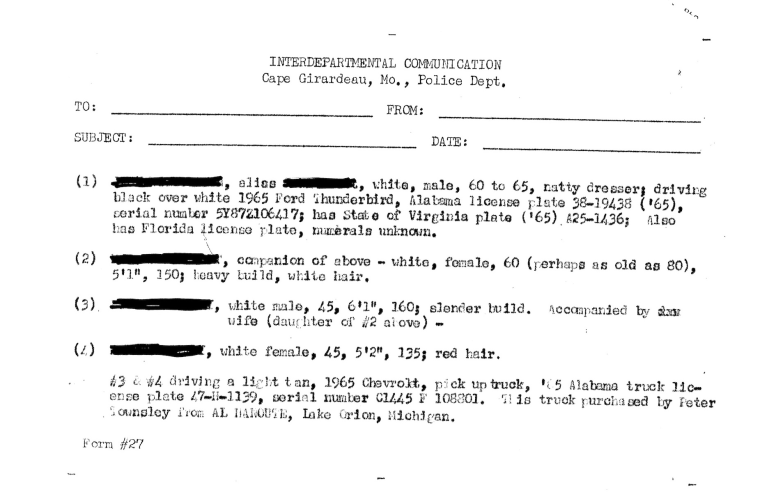
And on Beth’s missing persons poster police noted she was “believed to be carried away from front of her home by nomadic-type persons.”
Police later tracked the VIN numbers on those vehicles and learned they’d been purchased in Michigan.
So the Gills’ mom took matters into her own hands and made the drive to Michigan to speak with the car dealer herself.
Martha Gill Hamilton: "And he said, 'Yeah, I know who you're talking about. I know those people,' he said. 'They buy cars from me every two or three years.' So, they had bought several from him. But he said, 'I haven't seen them. And yes, I will get in touch with the police if they come back.' And evidently, they never showed back up."
Police believed then -- and still do believe -- that these ‘Travelers’ knew something.
Bobby Newton: "A lot of things point back to these individuals."
Josh Mankiewicz: "They were not suspected of any other crime while they were in town?"
Bobby Newton: "No."
Josh Mankiewicz: "But on the other hand, they were doing some suspicious things, certainly."
Bobby Newton: "They were definitely suspicious."
Josh Mankiewicz: "Assuming that they weren't in town specifically to abduct a child, what does that suggest -- that they were swapping license plates and using fake names? I mean, they were up to something. What was it?"
Bobby Newton: "Yeah. They were definitely involved in some sort of criminal activity. What exactly it was, I don't know. But the average person does not swap license plates and use fake names unless they have something they're trying to hide.”
However, precisely because of the fake names and the rotation of license plates, police never zeroed in on those four travelers.
Josh Mankiewicz: "It sounds like police worked pretty hard, but they never identified those four people."
Martha Gill Hamilton: "No, they didn't. They didn't."
Regardless, the police theory back then matched the family’s.
Bobby Newton: "They believed that she was abducted."
The bad news: Investigators couldn’t prove it.
Bobby Newton: "Honestly, there is very little evidence to go off of, if any. I mean, there's just -- she was there one minute and the next she wasn't."
Josh Mankiewicz: "It's surprising that this little girl was abducted and not a single person saw or heard anything."
Bobby Newton: "That's what's amazing to me, because it was a Sunday afternoon during the middle of summer, you know? And there's a lot of people, I'm sure, that were outside during that time. It doesn't make sense."
As leads dried up, the months since Beth’s disappearance became a year.
And the absence of Beth’s tiny presence took a giant toll on the Gill family.
Jeannie Gill Hinck: "We talk to each other about it. We didn't -- we didn't talk to our parents about it because it was too hard for them.
Martha Gill Hamilton: "One of my younger sisters was staying with Grandma and she said, 'I would come home. I would walk home. And I would look in the window, and if daddy was sitting at the table crying, I wouldn't come in.’”
Josh Mankiewicz: "That story's still hard for you to tell."
Martha Gill Hamilton: "Yeah, that part is.”
Today, Martha and Jeannie say their mom pushed down her pain and carried on. After all, she still had nine other children to take care of.
Jeannie Gill Hinck: "She just -- she couldn't let it put her down, because she had too many other responsibilities. But I know it was hard for her. And I know that she was hurting. My dad as well."
It had been more than a year since Beth’s disappearance, and her dad decided he had to do something.
So he pulled out a pen and a piece of paper. Harry Gill was on a mission.
On Christmas Day, 1966, he penned a letter to President Lyndon Johnson, pleading for help.
He wrote about the ‘Travelers,’ in part: “If these persons could be found, I feel certain our little girl will be found or at least we can learn what happened to her.”
He closed his letter with a reminder to the president of his family’s service to the country: “My three brothers and I all volunteered to serve our country in World War II. I served from January 1941 to December 1945. Now I am asking, through you, that my country serve my family’s needs.”
And about a month later, Harry opened his mailbox to find a letter from the very first FBI director, J. Edgar Hoover. It was not the answer Harry was hoping for.
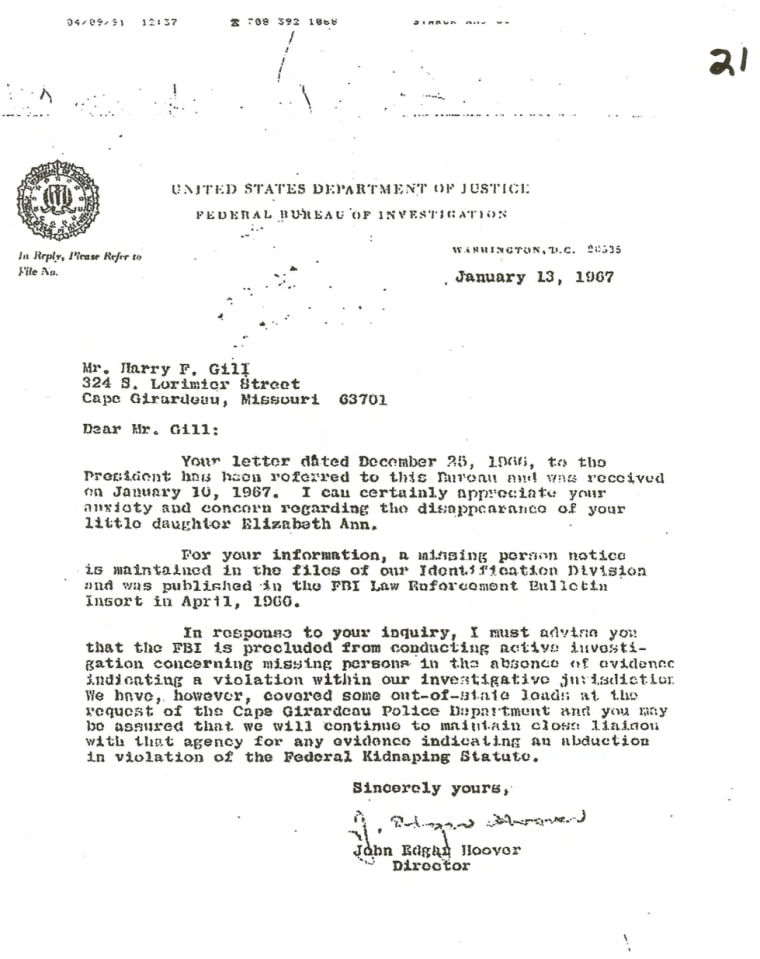
Hoover told the grieving father that the FBI had added Beth to their missing persons files as of April 1966, but said there was nothing more his agency could do.
Jeannie Gill Hinck: "I think that -- that just took the toll on him."
The family waited and waited as the years passed with no more leads. Until 1970, when some big news came in.
A convicted killer told police, from behind bars, that he knew where Beth was and what had happened to her...
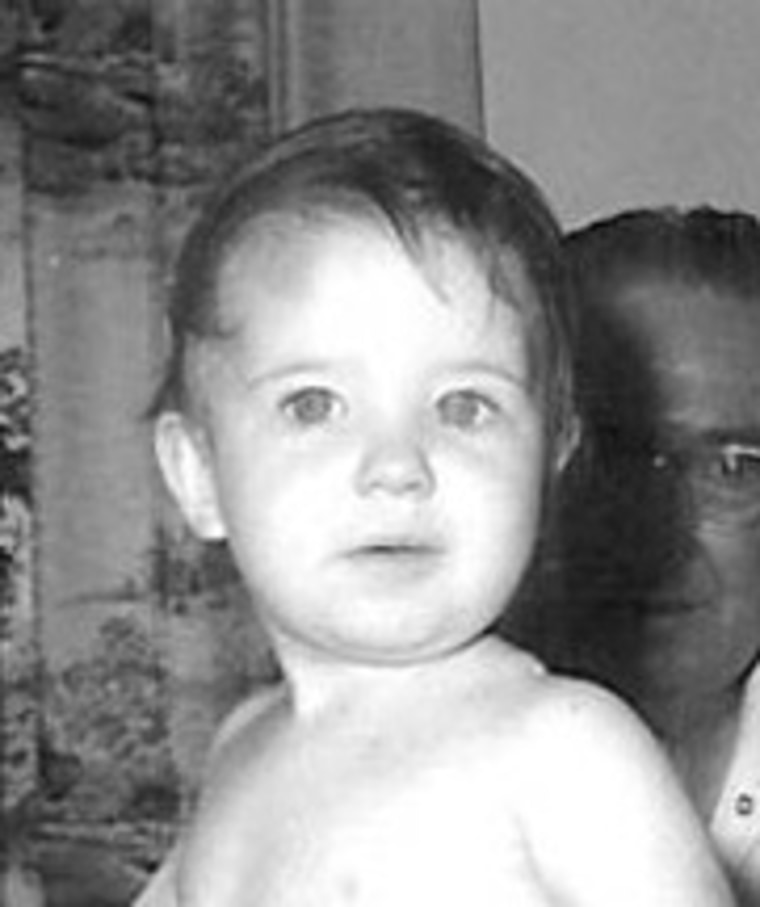
Her mother and father did grieve,
a home too full of sadness to conceive...
The year was 1970, five years after Beth Gill’s disappearance.
A man named Phillip Odell Clark wrote to a local sheriff, with a story that piqued the interest of everyone who knew Beth’s case.
Clark was already serving a life sentence in Missouri for murder, when he told investigators he knew what had happened to Beth five years earlier and that he could take them to her.
He told authorities he hit Beth with his car one day and then, afraid of being arrested, he buried her body.
It was a horrific story but, if true, it might give the Gill family some answers to all their questions.
Bobby Newton: "They ended up getting him out of prison to show officers where the body was. But they were never able to corroborate any of the information that he was providing, and it ended up being not true. He just basically made it up to get out of prison for a little while.”
This is something the families of missing persons frequently experience, the ups and downs new leads can bring.
Some are legit, but don’t pan out. Others make families victims of malicious lies.
After that awful hoax, the Gills faced even more pain. With the unanswered questions consuming him, Harry Gill died from a heart attack in 1970. He was 53 years old.
Martha Gill Hamilton: "It broke his heart, literally."
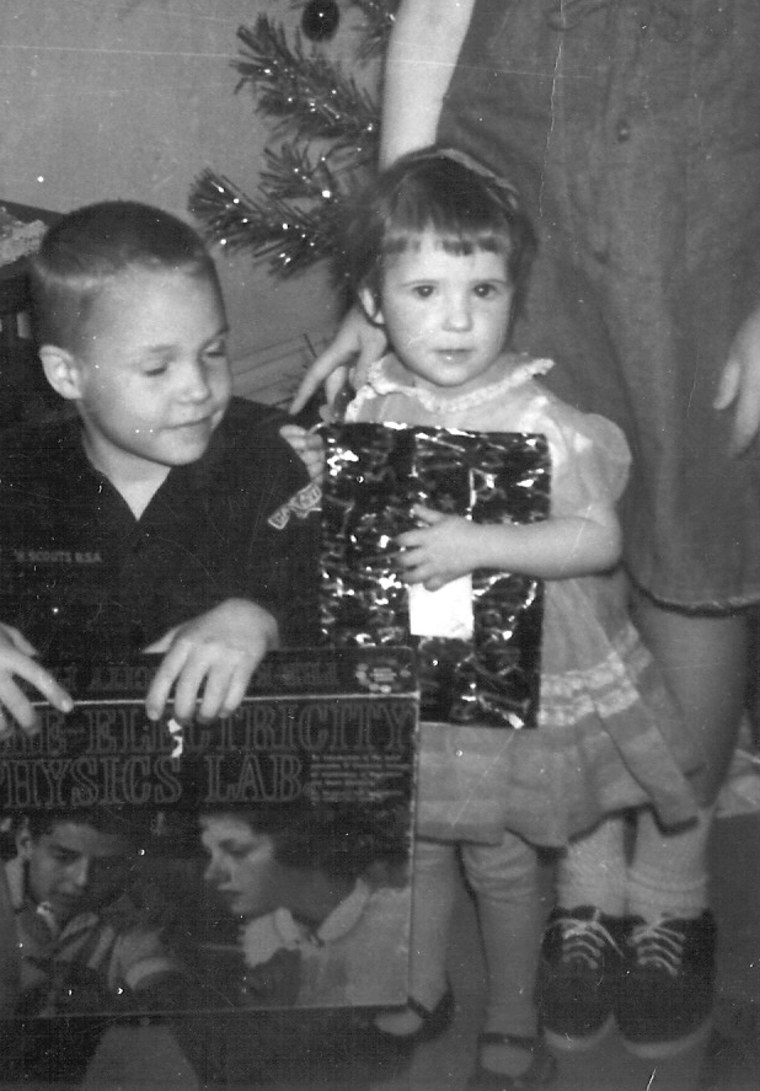
By 1975, a decade had passed since Beth’s disappearance. The family still held out hope.
And that’s when another witness came forward to tell a story -- and this one, unfortunately, rang true.
A woman contacted Martha and Jeannie’s grandmother. She said she’d been in a general store, about 45 minutes from Cape Girardeau, and she saw a man and woman come in with a little girl.
This happened, she said, on the exact day Beth went missing.
And the tantalizing coincidences don’t stop there. Here’s Martha:
Martha Gill Hamilton: "She was shopping that Sunday afternoon and a couple came in with this little girl who was crying for her mother. And they were buying her clothes and she said when they left, they were driving a Thunderbird -- a newer Thunderbird."
Josh Mankiewicz: "And did she tell police then?”
Martha Gill Hamilton: "No. And I was appalled that she hadn't talked to the police.”
Josh Mankiewicz: "Clearly, this weighed on her conscience. How long after Beth's abduction did your grandmother end up hearing that story?"
Martha Gill Hamilton: "It was about 10 years. In fact, I called the local police and I said, ‘Well, I just got this story.’ And they were like, ‘Well, we can't do anything with it now.’”
Unlike today, there was no security video from inside the store or outside in the parking lot or attached to neighboring storefronts or on homes.
There were no cell phone towers to ping locations for those ‘Travelers.’
It was a different time for investigators.
Now this would be a reach even today, but back then -- when a possible eyewitness account arrived a decade too late -- it was ancient history and there was no way to investigate it further.
And so more years passed. Many years…
The Gill children grew up. They got married and had families of their own.
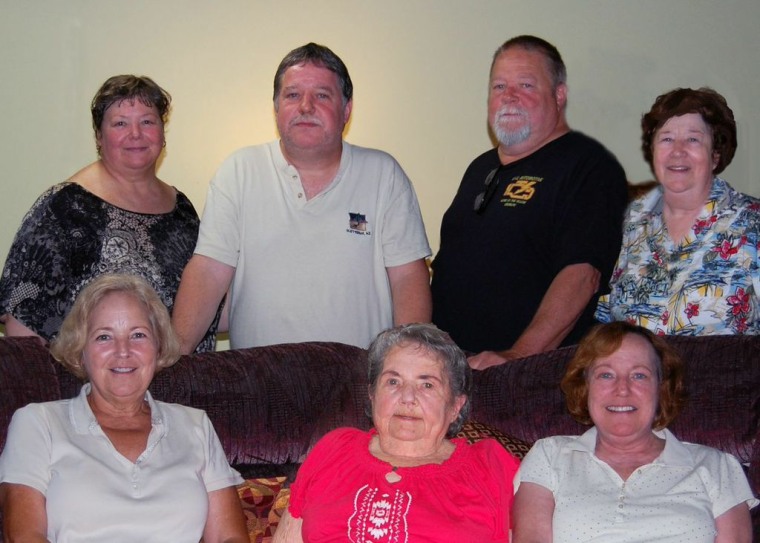
In a way, their lives went on. But at the same time, they never forgot Beth. And they never stopped looking.
Josh Mankiewicz: "Over the years, when you would travel, or when you'd be in a crowd, were you scanning strangers' faces thinking, ‘Maybe that's her?’”
Jeannie Gill Hinck: "Yes. I think all of us kind of looked for her. I think Mother did, too."
By 2003, Beth’s case got a fresh set of eyes: Cape Girardeau Police Detective Jimmy Smith.
Detective Smith pulled out the dusty case file and contacted the family.
Both the file and the evidence were thin; much of it had been lost over the years.
From what Smith could see in the file, the best lead in the case remained those four ‘Travelers’ in that Thunderbird and Chevy. He believed they had abducted Beth, and that she could still be alive and living under another name.
And now, in the 21st century, investigators had more tools at their disposal -- like DNA.
In 2010, Detective Smith contacted the National Center for Missing and Exploited Children and opened a case for Beth.
And after obtaining DNA samples from her mother and two of her sisters, he got Beth’s DNA profile entered into the national database. The hope was that a match might pop up in the system.
That same year, the FBI joined the investigation and reclassified her case as a kidnapping. If you’re counting, that would be 44 years after Beth’s father wrote that letter to President Johnson.
Josh Mankiewicz: "It sure took the FBI a long time to get on this case and start interviewing people."
Jeannie Gill Hinck: "It did. Now, back in the day when Beth was taken, when she disappeared, there had to be some kind of indication that she was taken for a reason. Either there had to be a letter left, a ransom note, or someone had to have seen her taken, before the FBI would ever even investigate."
In 1965, there were no AMBER Alerts buzzing on your phone, or digital roadside billboards highlighting a missing child or an abduction in real time.
There weren’t even milk cartons displaying missing children’s faces staring back at you while you eat your cereal. And there were no podcasts like this one.
Until the FBI entered the picture, there was only one local police department on the case and one very determined family.
Once they started, the FBI took a hard look at those four ‘Travelers’ who’d been in Cape Girardeau.
Martha Gill Hamilton: "We thought we had found one of the women who was in Cape, but it turned out to be a relative of hers. And the FBI went and talked to the relative. But she was in a nursing home and she had Alzheimer's and had been in that situation for a number of years, so they couldn't get anything."
Josh Mankiewicz: "She was no help."
Martha Gill Hamilton: "No."
In all, Martha said, the FBI conducted three interviews with potential relatives of the ‘Travelers.’ None of them panned out.
And with that, the Gill family decided to up their game.
They had been searching for Beth for more than 40 years. So if they couldn’t find Beth, they were going to try to get Beth to find them.
They started a Facebook group and began using the media to try to generate leads. In September 2010, the sisters appeared on the TODAY show.
Martha Gill Hamilton on TODAY: "My gut says she's out there. She's waiting for us."
Jeannie Gill Hinck on TODAY: "Mine, too. I believe that she may still be alive and if she is, then we need to do everything we can to allow her the choice of coming back home."
Seven years after that, Beth’s mother died, never knowing what happened to her baby.
The Gill family also reached out to Dateline and, in 2019, we featured the case on our website. The family did all of that in the hope that Beth might come forward.
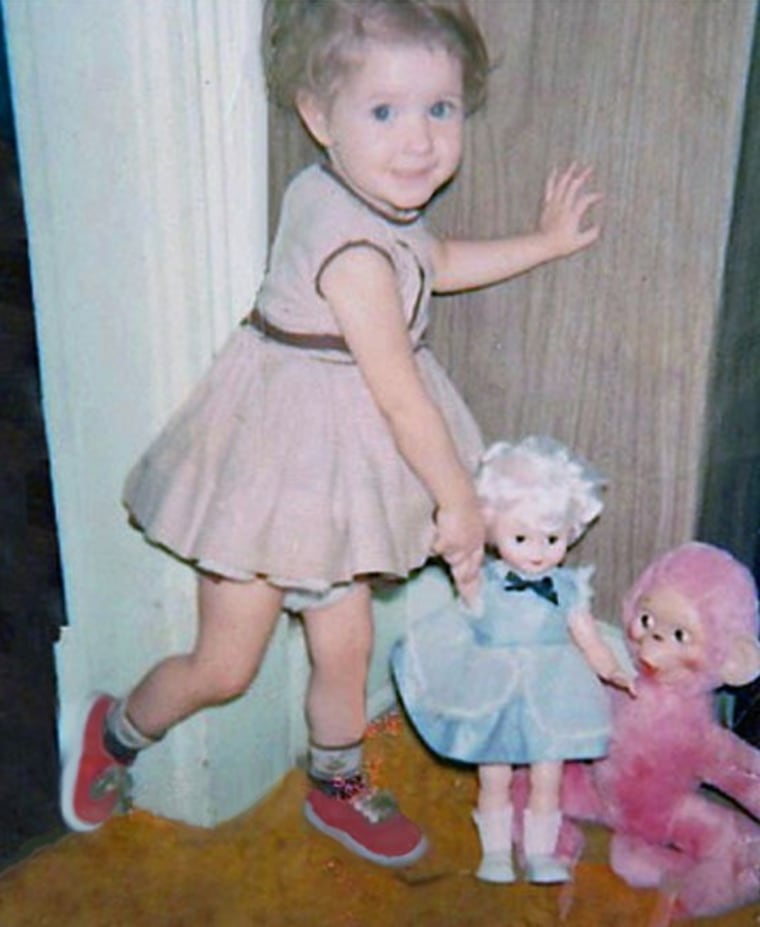
Today, Martha and her siblings believe DNA may hold the final puzzle piece for the Gill family portrait.
They’ve submitted DNA to 23&Me and other ancestry sites. And they’ve had women reach out to them, each believing that they might be Beth.
Martha Gill Hamilton: "The first thing I do is I find out their age and ask if they have any pictures of when they were younger. We talk the circumstances. Why would they think they might be? Did they have any childhood memories that were odd or unusual? And if everything checks out, then I get in touch with law enforcement and have them arrange DNA done through the law office near them."
Between Martha and the Cape Girardeau Police Department, about two dozen women have submitted DNA in the case. Many of them were adopted or orphaned at an early age, and they’re trying to trace their family tree.
Josh Mankiewicz: "The family believes that Beth is still alive, that she was taken by somebody who wanted to raise her as their own child. Is that wishful thinking on their part?"
Bobby Newton: "No, I believe that's very possible. And the reason I say that is because there's no evidence of any type of foul play. There's no evidence that anything happened to her other than she was abducted or, you know, she disappeared in some -- some way."
Josh Mankiewicz: "So it is possible that Beth is still alive. And who knows? May be in the audience right now."
Bobby Newton: "Yeah. Her DNA is on file, so if somebody thinks they're Beth, by all means, go to their local police department and let them know. Or they can even call us and let us know, 'Hey, I think I'm Beth,' and then we can step them in the right direction of what to do."
So far none of the women who offered their DNA has been Beth Gill.
Despite that, some of their stories have a silver lining, thanks to Martha. She recalls when a woman contacted her thinking she might be Beth. Her DNA was tested.
Martha Gill Hamilton: "I met with her, and -- because she wasn't that far away. And she wasn't Beth, but she was very dis-- disappointed. And I said, 'Well, why don't you put your DNA out there, and if your family's looking for you, they might, you know, it might match up.’ I told her how to do it, and she did. And it was four years later that her birth sister put her DNA in and the match came up. And now she's reunited with her sister."
Josh Mankiewicz: "You helped do that, that's great."
Martha Gill Hamilton: "I didn't take credit, but--."
Josh Mankiewicz: "Yeah, but you clearly had a lot to do with that."
Martha Gill Hamilton: "Well, I helped her."
While searching for Beth, Martha became a volunteer at the National Center for Missing and Exploited Children. She was hoping she might help others achieve more reunions like that -- the kind she hasn’t experienced herself.
Martha Gill Hamilton: "I do volunteer work with families of the missing, just to basically get them through the toughest part and keep them strong so that when they do reunite, they're capable of continuing on."
It has been literally a lifelong journey.
Martha Gill Hamilton: "I won't stop looking for her. But if she's out there and I believe she is, we have to be where she can find us. And that's why I keep the case active."
If she’s still alive, Beth Gill will be 61 years old this August. And the National Center for Missing and Exploited Children has created a series of age-progression photos of Beth over the years.

It is kind of eerie looking into her face -- to see the adult the family has searched for, for years, but never seen with their own eyes.
And with only those photos at her fingertips these days, Martha thinks about what Beth might be doing today.
Martha Gill Hamilton: "I wonder if she's happy, if she has a family."
Josh Mankiewicz: "Even though you only knew her for the first couple of years of her life."
Martha Gill Hamilton: "Yes, but it doesn't take long for someone to make an impact on your life."
Martha and Jeannie said they have faith their family will finally get an ending to their story, after 58 years.
Josh Mankiewicz: "You think you're going to see Beth again?"
Jeannie Gill Hinck: "I sure hope so. I think that the only way we'll see her now is if she was taken to be someone else's child, that she would have to suspect that and go looking for her family. Or, she might hear a podcast like this."
And her big sisters are ready to meet her, all over again.
Jeannie Gill Hinck: "I love you, Beth. We all love you. And we wish we could reconnect with you, whoever you are."
Martha Gill Hamilton: "Beth, we hope that you're happy. But we'd love to meet you."
But we shall be waiting ever more,
for the sound of her knock upon the door.
If you have any information about Beth Gill, or believe you might even be her, call the National Center for Missing and Exploited Children at 1-800-THE-LOST.
To learn more about other people we’ve covered in our “Missing in America” series, go to DatelineMissingInAmerica.com. And there you’ll be able to submit cases you think we should cover in the future.
